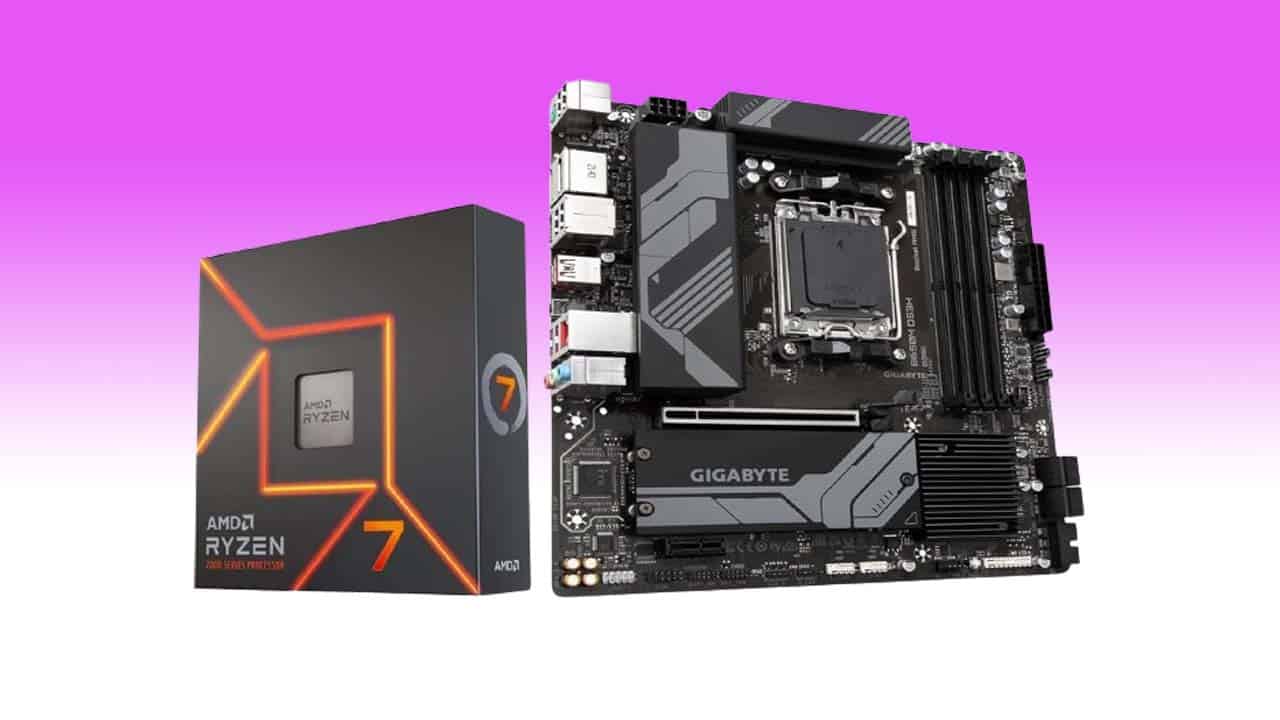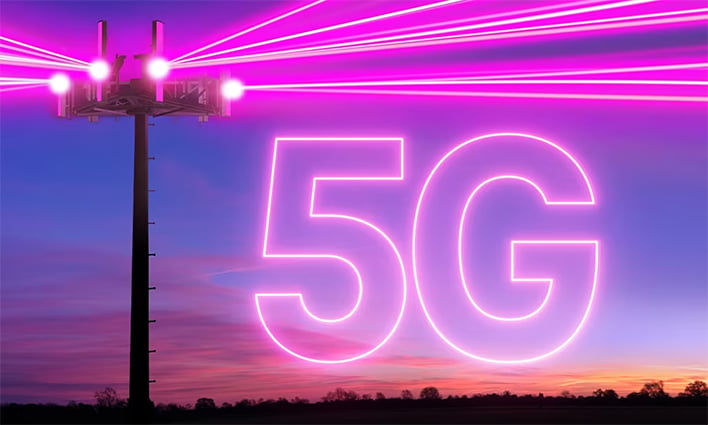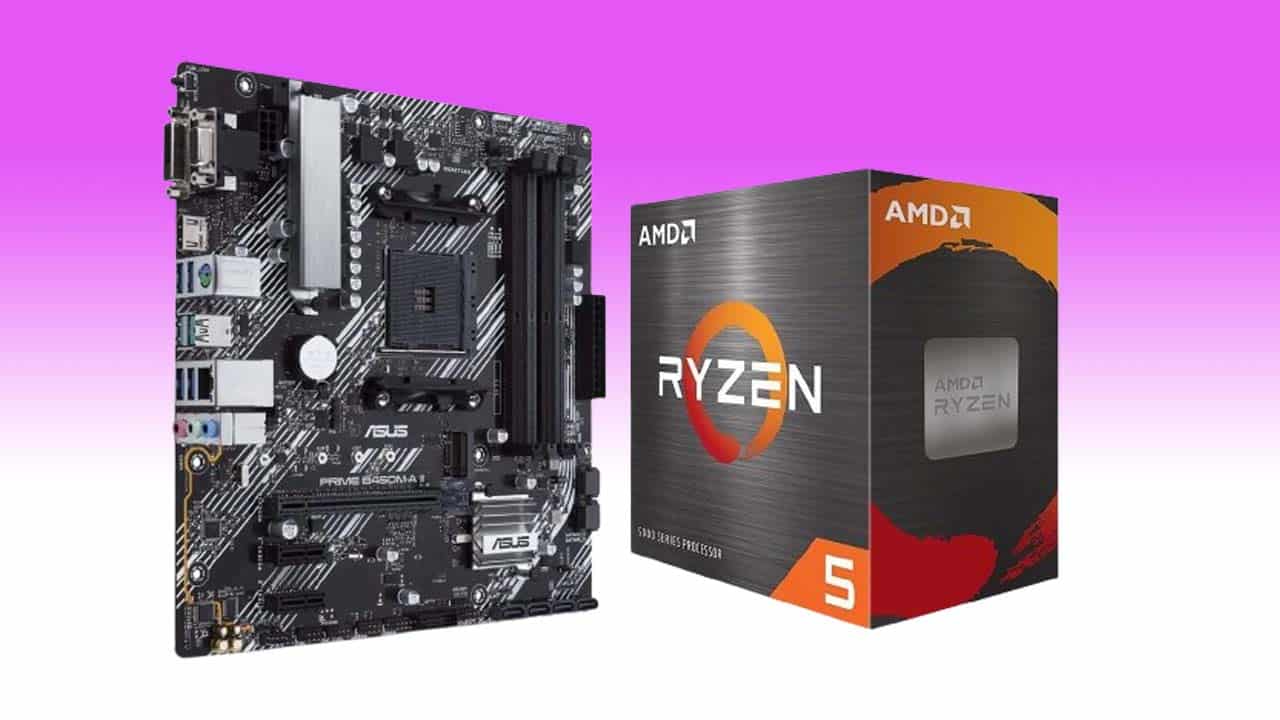In fact, Intel would not be disregarded of the CES 2024 launch occasion. Identical to final 12 months, the corporate has an entire plethora of recent processors to indicate off on the Las Vegas expo. The checklist consists of new 14th-gen “non-Okay” desktop CPUs in each 35W and 65W flavors, the primary collection of “non-Extremely” Core processors, and Intel’s fastest-ever laptop computer gaming chips.
We’ll begin with that, since it is a good jumping-off level, and likewise the main target of most of Intel’s personal bulletins right this moment. The Intel Core 14th Gen HX Processors are, similar to the earlier generations, basically the desktop “S” silicon tailored for cell use. AMD does the identical factor, in fact; “Dragon Vary” is de facto simply Raphael below a harsh energy restrict.
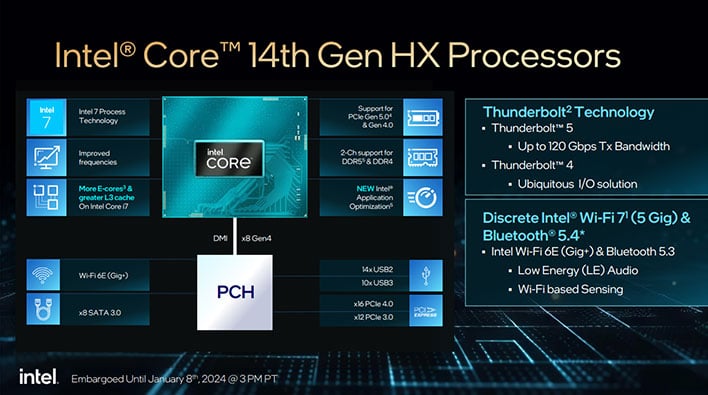
The identical factor is true right here—the Core i9-14900HX is mainly a desktop Core i9-14900K with a nominal 55W energy restrict and a max turbo energy of 157W. You get eight Raptor Cove efficiency cores, 16 Gracemont environment friendly cores, and 32 complete threads. The utmost turbo frequency is a bit decrease at “simply” 5.8 GHz on the P-cores, however in any other case this half is equivalent to the desktop model.
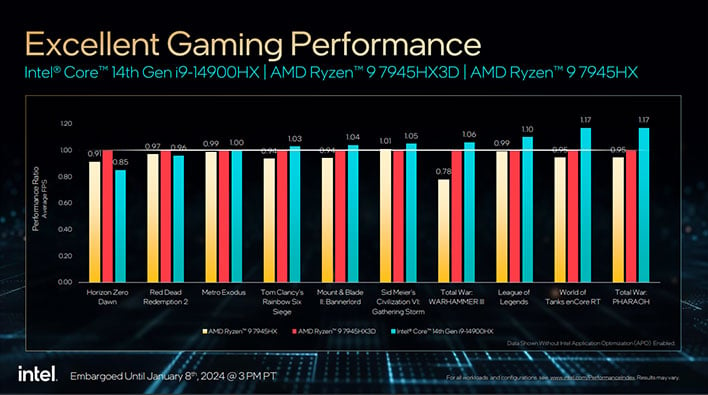
Intel goes to some lengths evaluating the Core i9-14900HX in opposition to the Ryzen 9 7945HX. In a few of the slides the corporate additionally compares its new child in opposition to the 3D V-Cache-equipped Ryzen 9 7945HX3D, however just some. Intel’s benchmarks present its product handily defeating the 16-core AMD processors throughout a variety of productiveness and gaming assessments; particularly, Intel’s personal benchmarks put the Core i9-14900HX between 15% behind and 17% forward of the Ryzen 9 7945HX3D in well-liked video games.

Apparently, Intel additionally goes as far as to particularly declare superior frame-time consistency, evaluating 99th-percentile FPS outcomes throughout quite a lot of titles, principally eSports. That is truly the identical metric that we regularly use for our worst-case frametimes, represented as “1% low”; usually the 99th percentile could be the highest 1% of frames, however Intel does particularly notice that it means low framerates.

For productiveness assessments, Intel claims that its new CPU is between 3% and 51% sooner than a Ryzen 9 7945HX, with the smallest beneficial properties within the artificial UL Procyon benchmark, whereas the most important win is available in an Unreal Engine 5 multitasking manufacturing workflow take a look at. Intel truly demoed a model of that take a look at reside for us; you’ll be able to see a video of it embedded on the backside of this publish.
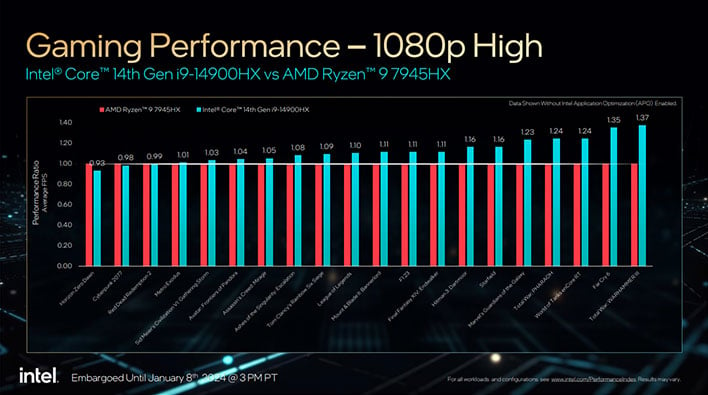
In fact, the Core i9-14900HX is not the one “HX” processor that Intel is launching. There’s an entire household of them starting from the curiously-named Core i5-14450HX all the best way as much as the aforementioned i9. You’ll be able to see the total specs of every mannequin within the chart beneath:

If you happen to’re not a “desktop CPU in cell kind” form of individual, Intel’s nonetheless received you coated. The corporate can be revealing its “Core Cell Processors Sequence 1,” that are the primary set of “non-Extremely” Core processors meant for laptops. Put merely, they’re 14th-gen Core by one other identify. These monolithic CPUs are designed for extraordinarily skinny and lightweight gadgets in addition to entry-level machines, in order that they solely sport between six and ten CPU cores.
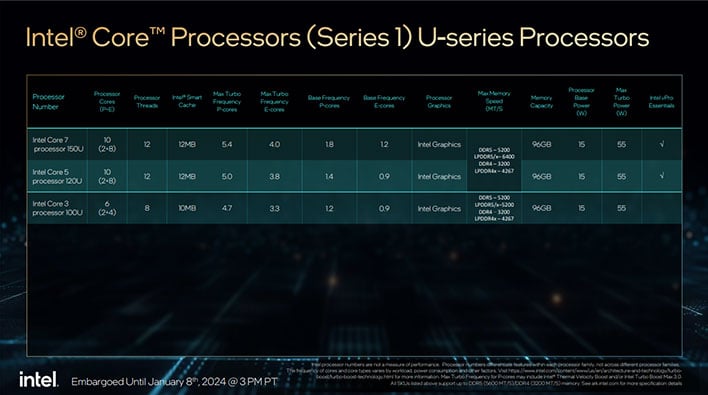
P-Core frequency on the quickest of those chips, the Core 7 150U, tops out at 5.4 GHz; that is not dangerous, however the 15W TDP will in all probability stop these chips from spending quite a lot of time close to the highest of their increase curves. Base frequencies are extra reasonable: 1.8 GHz P-core and 1.2 GHz E-core on the 150U, whereas the Core 3 100U solely ensures 1.2 GHZ on the P-cores and 900 MHz on the E-cores. Been a very long time since I reported on a CPU with a sub-1 GHz clock pace spec, whilst a base worth.
Intel Core 14th Technology Mainstream Desktop CPUs
Did you suppose that the 14th-generation desktop CPUs would begin and finish with the high-end “Okay” fashions? So did we. All of us have been mistaken, although, as right this moment Intel is launching a full set of 35W and 65W CPUs for the LGA 1700 socket. To the shock of nobody particularly, peak clock charges on these chips are significantly decrease than on the unlocked Okay fashions because of the dearth of Turbo Increase Max on all however the high two SKUs, and the restriction of Thermal Velocity Increase to the highest Core i9-14900.
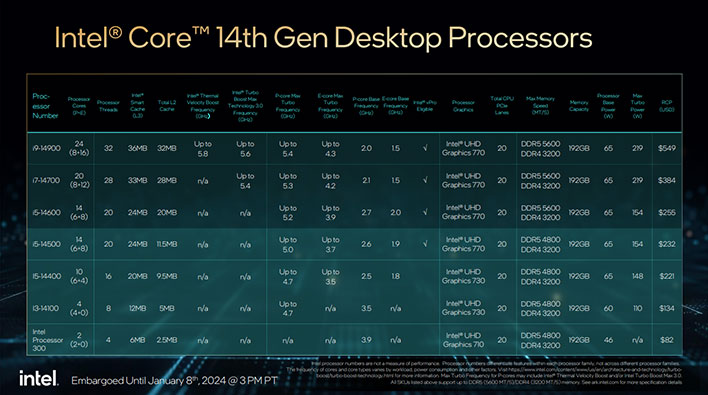
Beginning with the usual 65W components, we vary from an 8P+16e behemoth within the Core i9-14900 all the best way all the way down to a two-core four-thread CPU within the Intel Processor 300. That half is not even based mostly on Raptor Lake silicon, however relatively the older Alder Lake design. The truth is, the Core i3-14100, the Core i5-14400, and the Core i5-14500 are all based mostly on the Alder Lake silicon. We will inform that due to the diminished L2 cache per core. That makes the Core i5-14600 a substantial improve over the Core i5-14500, at the least in gaming efficiency.
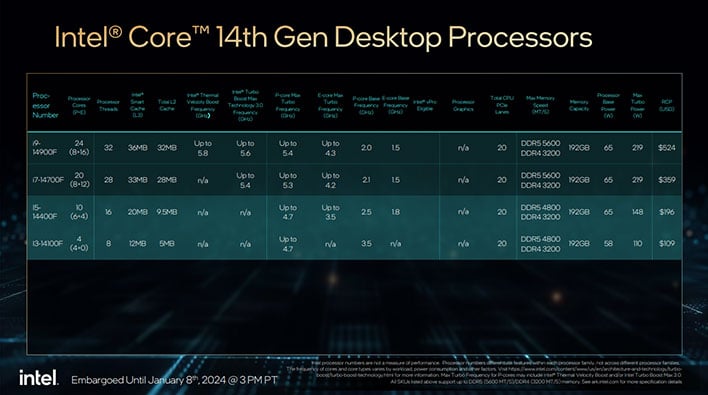
If you happen to do not want built-in graphics, these “F” SKUs supply the identical capabilities as their equal 65W fashions above, simply with out the built-in GPU. No have to pore over the product charts; each specification other than the advised pricing is equivalent (we checked.)
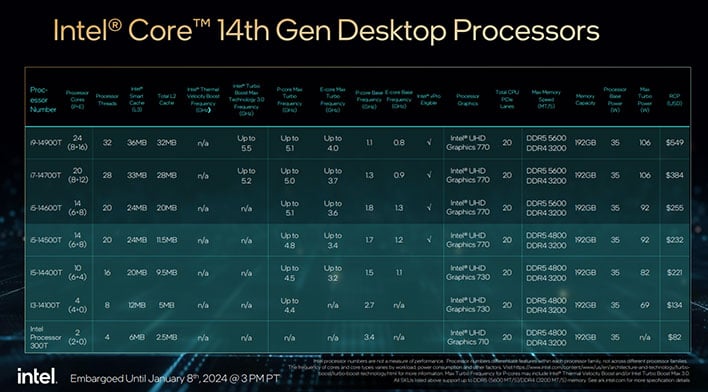
Lastly, the “T” processors are available with 35-watt energy limits and additional cuts to the clock charges of every CPU. It is form of superb to see that the Core i9-14900T exists; that is Raptor Lake Refresh desktop silicon slashed to a fair stricter energy restrict than what you may discover within the “HX” cell processors. In consequence, the bottom frequencies are fairly low certainly, with the E-core base clock on the Core i9-14900T coming in at simply 800 MHz.
Intel Guarantees Huge Updates To APO
One among our favourite applied sciences that Intel has launched in recent times is its Software Efficiency Optimizer. This can be a profile-based Dynamic Tuning Expertise (DTT) optimization that the system can apply on a per-app foundation. APO can do issues like schedule apps on sure CPUs, disable E-cores, and even disable hyper-threading for sure apps. In our testing, APO can present appreciable efficiency advantages simply by flicking a software program change.

We have been afraid that APO was a one-and-done to advertise the launch of Intel’s otherwise-slightly-underwhelming 14th-generation desktop CPUs, however that seems to not be the case. Intel informed us at CES that will probably be launching a giant replace for APO that provides assist for video games like F1 22, Unusual Brigrade, World Battle Z, Dust 5, and World of Warcraft alongside the supported titles, that are Guardians of the Galaxy, Rainbow Six: Siege, and Metro Exodus.
Intel’s personal testing has proven efficiency beneficial properties of as much as 18% from enabling APO. Free efficiency for a software program toggle is a darn tremendous deal, however we might wish to see the tech get backported to Thirteenth- and Twelfth-gen programs, too. Intel says that the replace for APO is coming towards the tip of this month.



